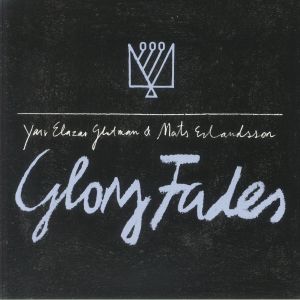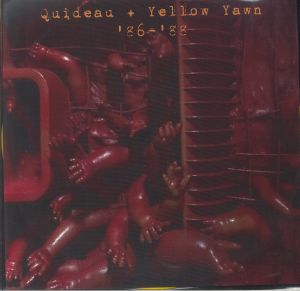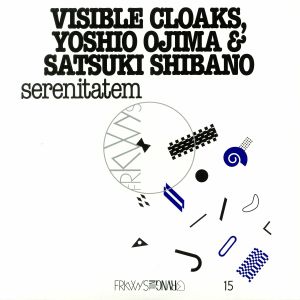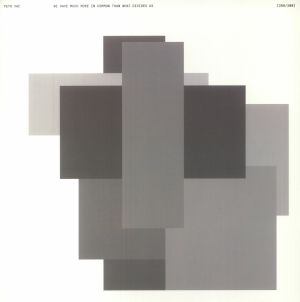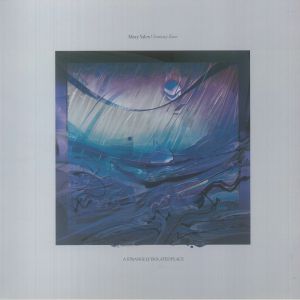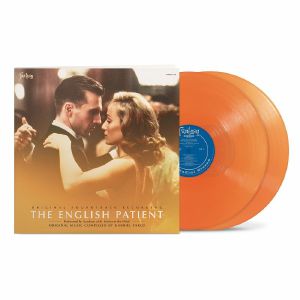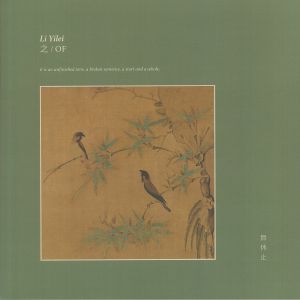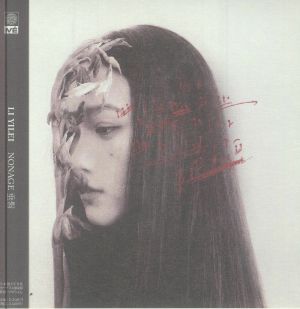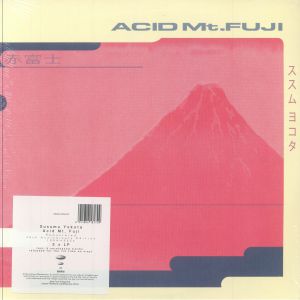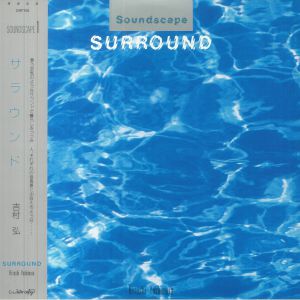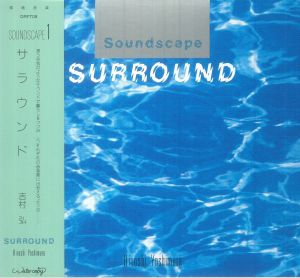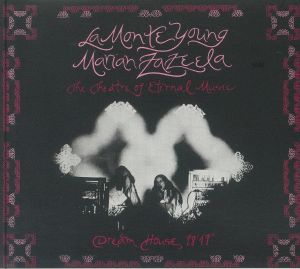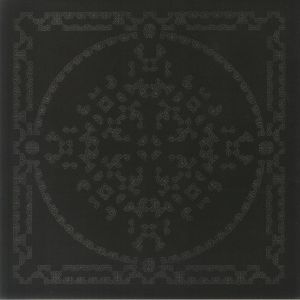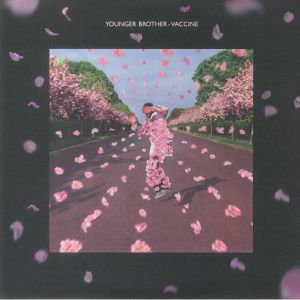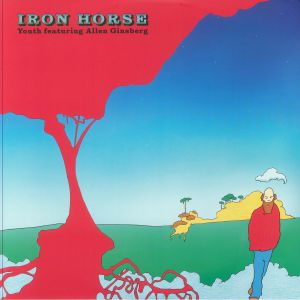Back catalogue: Leftfield
Juno's full catalogue of Leftfield
シングル
Along The Simple Line (limited translucent purple vinyl 12")
Cat: CNTRC 005EP. Rel: 28 Sep 22
in stock $26.88
アルバム
in stock $26.06
Played by: Juno Recommends Ambient/Drone
in stock $24.09
Moon Garden (CD with obi-strip)
Cat: 61761. Rel: 11 Feb 25
Review: In a collaboration for the ages, we hear German kosmische musician Hans-Joachim Roedelius (Cluster, Harmonia) team up with Japanese flutist Yuko Matsuzaki and Berlin Philharmonic analog musician sound engineer Onnen Bock for a nacreous improv blast. Spanning soft, pearly electronica and neoclassical, Moon Garden comprises five works, incorporating techniques and fragments of songs already released. A mythical aura unfurls through synth koto and organic harmonics; 'In The Forest Of Syrinx' establishes a singing bowled, new age aesthetic, segueing into the purely vocal threnody 'Sapphire Jellyfish'. Bridging electronic washes, piano and female vocals, this is a borderless soundscape of exciting proportions.
… Read more in stock $22.96
in stock $26.61
We Have Much More In Common Than What Divides Us (numbered yellow vinyl LP limited to 300 copies)
Cat: UKM 106. Rel: 15 Dec 22
in stock $37.82
Fantasy Zone (translucent purple smokey vinyl LP + insert)
Cat: ASIPV 042. Rel: 01 Sep 23
Review: German musician Mary Yalex makes her debuts on A Strangely Isolated Place with a new album that offers up her vision of the future via a suite of lush ambient tunes. Yalex draws upon her day-to-day surroundings for inspiration and pairs soft melodies with vivid instrumentation. As the record unfolds, things get ever more future facing with darker moods and haunting vibes that tend toward dystopia. Her pristine synth work shines throughout the album and it all adds up to a thought-provoking listen as well las a notable label debut for Yalex.
… Read more in stock $27.74
in stock $33.05
Cyberpunk: Edgerunners (Soundtrack) (180 gram purple vinyl LP + insert with obi-strip)
Cat: 196588 63871. Rel: 22 Mar 24
Review: Akira Yamaoka, Marcin Przybylowicz and PT Adamczyk's original soundtrack for Cyberpunk: Edgerunners hears original OST numbers written for the award-winning anime series set within the futuristic dystopian world of Cyberpunk 2077, which originally spawned as the offshoot of the video game of the same name. Fitting for the music's breathy progressive house and electro oeuvre, which is interspersed with more traditional expressionist orchestral climaxes and builds, the Edgerunners series centres on a crack team of cyberpunk renegades, as they traverse the beastly underbelly of Night City, located in a futuristic vision of LA, navigating a world replete with corruption, gang violence, and cybernetic addiction. A note for fans: this vinyl edition includes unused, never-before-heard tracks composed by Yamaoka for Edgerunners, but which does not appear in the series.
… Read more in stock $39.21
in stock $49.59
The English Patient (Soundtrack) (Deluxe Edition) (gatefold 'saharan sun' translucent orange vinyl 2xLP)
Cat: 725579 1. Rel: 26 Mar 25
Review: The music from Michael Ondaatje's Booker Prize and 12-Oscar-winning film encompasses the original score by Gabriel Yared with the haunting vocals of Marta Sebestyen and Fred Astaire. It is a story which has successfully made its mark on every medium that counts a - a classic to beat all classics. It's a cathartic journey that explores identity, fidelity, and fate amid the chaos of World War II. Shot against the majestic backdrop of the Northern Sahara and Italy, Yared's score blends Hungarian folk tunes, baroque themes, and romantic orchestration and mirrors the emotion of the film's characters without relying on visuals. Period tracks by Fred Astaire, Ella Fitzgerald and Benny Goodman complement the emotional depth of the story.
… Read more in stock $40.90
in stock $40.32
in stock $27.17
Review: In Li Yield's Chinese homeland, the title of this album translates back to English as 'childhood' or 'dishevelled hair'. Both are fitting. The London-based multi-instrumentalist and composer follows on from 2021's spellbinding OF with a second full-length record, and this time looks to try and immortalise the experience of growing up young, seeing the world through wide open eyes and learning by engaging with it. The technical back story is impressive - Nonage is packed with outtakes of old Chinese TV shows, mechanical toys and instruments that were made by the artist for this project. Yilei's own childhood piano jams, and half-memories, are also interspersed. In the end, it's a beguiling listen, intriguing and curious, and consistently hazy, just like those recollections from when you were only just able to reach the counter top.
… Read more in stock $27.17
in stock $22.13
Acid Mt Fuji (30th Anniversary Edition) (gatefold 3xLP)
Cat: MMDS 24004LP. Rel: 11 Sep 24
Review: Susumu Yokota's venerated 1994 classic Acid Mt. Fuji is reissued in expanded, deluxe fashion, as part of the 30th anniversary celebrations of the label that originally released it. Japan's Musicmine - specifically its electronic subsidiary Sublime - released the album on June 29, 1994, simultaneously with Ken Ishii's Reference To Difference, as their inaugural joint offering. Tantamount to a fusion of ambient acid/rave - then still nascent in Japan - with new age music, Susumo Yokota was likely the best man for the job at the time. With his first album, The Frankfurt-Tokyo Connection, he'd not yet established his electro-pastoralist style, yet it was Acid Mt. Fuji that divined the latter-day emotes of Sakura, a new age so adroitly fused with electronica yet emulable by few. Though the later years of Yokota's life have been couched in a good deal of privacy and mystery, Acid Mt. Fuji certainly betrays a fittingly shrewd and introspective character on the part of the artist, one that served him well. Its long, drawn-out nature soundscapes - tempered by the piquant sounds of modern synths like the TB-303, which animistically, pseudohallucinogenically blend with the animal sounds themselves - recall something like an alpine augur's waking dream.
… Read morePlayed by: Gilbert - (Innate/MOS)
in stock $42.30
Surround (remastered) (LP + insert with obi-strip)
Cat: DRFT 09LP. Rel: 19 Jan 24
Review: In the widespread revival of Japanese ambient music, Hiroshi Yoshimura's music has been cast as some of the most cherished and reissued. Albums such as Music For Nine Post Cards and Green have enjoyed high-end editions in recent times, and now comes the turn of 1986 masterpiece Surround. It's been fervently pined for by the new wave of Far East ambient aficionados, and for good reason. This is Yoshimura at his best, delicately placing elegant musical figures atop oceanic pools of synth and leaving ample room for the mind to cast adrift. That might sound like a very generic way of describing an ambient release, but Surround's qualities transcend the formulaic trappings of the genre to become something truly magical.
… Read morePlayed by: DJ ROCCA, Jura Soundsystem
in stock $41.73
Surround (remastered) (blue vinyl LP with obi-strip)
Cat: DRFT 09C1. Rel: 19 Jan 24
Review: Amongst the many Hiroshi Yoshimura albums to enjoy a reissue in recent years, it's astonishing it's taken until now for someone to do right by Surround. Yoshimura's legacy (and second hand value) has shot up since the resurgent appreciation of ambient music from Japan and some his most treasured albums have ridden waves of online algorithms to become wildly popular and highly sought after. The prices on original copies of this 1986 album tell you all you need to know, but thankfully Temporal Drift are here to present a high-end reissue of this masterful piece of ambient escapism, crafted by a true master of the genre. This is the blue vinyl pressing, all the better to dive into head first.
… Read more in stock $44.54
Surround (remastered) (CD with obi-strip)
Cat: DRFT 09CD. Rel: 10 Nov 23
Review: Following the explosion of Japanese ambient reissues in the past five years or so, certain artists have become household names in a curious combination of favourable streaming conditions and a consistent need for people to slow their lives down via music. Alongside the likes of Midori Takada and Yasuaki Shimizu stands Hiroshi Yoshimura, oddly omnipresent on YouTube sidebars but more importantly universally appealing for his exquisite, wholly natural take on environmental music. 1986 album Surround has been crying out for a reissue for a long time and finally Temporal Drift have done the right thing and brought this stunning record back into reach. Faithfully remastered with the fervent audiophile audience in mind, this is a long overdue celebration of one of Yoshimura's finest releases.
… Read more in stock $20.45
Review: Stepping into the world of Hiroshi Yoshimura is like entering a tranquil garden, where every sound is a carefully cultivated element of the landscape. His music, originating in the 1980s, blurs the lines between ambient soundscapes and composed pieces, creating an immersive experience that evokes the serenity of the natural world. 'Over The Clover' whispers with the gentle rustling of leaves, while 'Flora' blossoms with delicate melodies. Yoshimura captures the essence of specific natural elements, from the unfurling of a morning glory in 'Asagao' to the subtle shifts in air pressure in 'Wind Echo'. He even finds music in the unexpected, as 'Maple Syrup Factory' introduces a surprising sweetness to the sonic landscape. But Yoshimura's work is not simply about recreating the sounds of nature. The Japanese musician and composer encourages a deeper listening experience, where subtle details and intricate textures emerge with each listen, definitely music that rewards close attention.
… Read more in stock $20.45
Cat: SV 199CD. Rel: 21 May 24
Review: La Monte Young is one of the most important figures in the development of American minimal composition and performance, having explored the science of sound at an atomic level through his use of just intonation and rational number-based tuning systems. His wife Marian Zeeler was also one of his closest collaborators, and in 1974 they released their second album Dream House 78'17" as a demonstration of the ideas they had been proposing in their work. Side A was recorded at a private concert which also features Jon Hassell and Garrett List, while Side B is an extended tonal study via a bowed gong, which was monitored precisely through oscilloscopes for an exacting immersion in harmonic interplay and its physical and psychoacoustic properties.
… Read more in stock $22.40
The Theatre Of Eternal Music: Dream House 78 17 (reissue) (gatefold LP + MP3 download code)
Cat: SV 199LP. Rel: 20 May 24
Review: American minimalism pioneers La Monte Young and Marian Zeeler released their second album in 1974, when they were already well-established in the US avant-garde. This serves as a document of their work and ideas at the time, with two very different sides on offer. The first side was recorded at a private concert, in which Young and Zeeler's voices interact with sustained drones and some occasional trumpet from Jon Hassell and trombone from Garrett List. The second side focuses on a bowed gong study, ruminating on the particulars of frequency and harmonics and their potential effects on the listener and the space in which they're heard.
… Read morePlayed by: Ekoplekz, Juno Recommends Ambient/Drone
in stock $37.26
31 VII 69 10:26 10:49 PM (reissue) (LP + MP3 download code)
Cat: SV 198LP. Rel: 03 Apr 23
Review: Fluxus drone pioneers La Monte Young and Marian Zazeela present the latest reissue of 31 VII 69 10:26-10:49 PM/23 VIII 64 2:50:45-3:11 AM The Volga Delta, a historic and mesmerizing soundworld which captures the '60s pioneers' twin paths through the worlds of performance art, sculpture-based acousmatic music, and an overall real alternative beatnik lifestyle . Made between 1964 and 1969, the album has gone down in history as a captivating fusion of dreamy electronic sounds and Eastern-influenced vocalization, with techniques such as microtonal tuning and extended repetition laying its experimental groundwork.
… Read more in stock $25.49
in stock $36.69
in stock $33.60
in stock $21.85

 USD
USD







